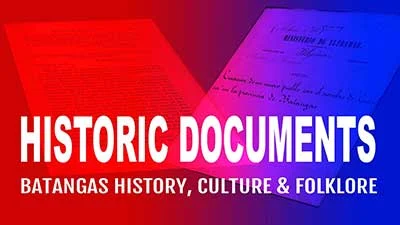Action Report of USS Richard W. Suesens (DE-342) on the Nasugbu Operation, Jan 1945
FLEET POST OFFICE
SAN FRANCISCO, CALIFORNIA
WGT/DE342/A9/A16
RWG/gen
Serial No. 005
| From: | The Commanding Officer |
| To: | The Commander in Chief United States Fleet |
| Via: |
(1) The Commander Task Unit 78.2.8 (Com Des Ron 5) (2) The Commander Task Group 78.2 (Com Phib Group 8) (3) The Commander Task Force 78 (Com Seven Phib For) (4) The Commander Task Force 77 (Com Seventh Fleet) |
| Subject: | Action Report, Nasugbu Operation. |
| Reference: | (a) Article 874(6) U.S. Navy Regulations 1920. |
Part I. On 27 January 1945, the USS RICHARD W. SUESENS departed from San Pedro Bay, Leyte, P.I. and joined the screen of Task Group 78.2 at dusk and proceeded to Nasugbu Bay. At six fifteen item on 31 January 1945, T.G. 78.2 deployed for the landing and the SUESENS took station in the anti-submarine and anti-torpedo boat screen. Our force was comprised of Task Group 78.2 Rear Admiral W.M. Fochteler USN in Command with Captain W.M. Cole USN screen commander. The outer anti-submarine screen encountered groups of Japanese motor torpedo boats and small suicide boats on the nights of 31 January and 1 February but the SUESENS did not participate in the action because of its position on the opposite end of the screen.
Part II. The voyage from Leyte to Nasugbu was uneventful and the landing was made without opposition on the beachhead and with no opposition from the sea until 2257 Item on 31 January. The following T.B.S. transmission was heard from the USS LOUGH (DE 586) to the screen commander, “Large number of small boats near me. I am investigating further.” From then on until about 0110 Item on 1 February, the USS LOUGH engaged these boats assisted by the USS CLAXTON (DD3 571). The PC4 1129 was sunk by these boats with the loss of one man. At 2250 Item 1 February, the outer screen was again under attack by similar boats which were taken under fire by the USS LOUGH assisted by the USS CONYNGHAM (DD 371), the USS TINSMAN (DE 589) and the USS CLAXTON (DD 571) until about 2330 Item. During the two nights’ actions, an unknown number were sunk.
Part III. No comment since this vessel did not fire at the enemy.
Part IV. No comment.
FLEET POST OFFICE
SAN FRANCISCO, CALIFORNIA
WGT/DE342/A9/A16
RWG/gen
Serial No. 005
| Subject: | Action Report, Nasugbu Operation. |
(b) Radar – At no time was contact made on the enemy by this vessel.
(c) Air Operation – Air coverage was excellent at all times during the entire operation.
(d) Own and enemy tactics – No comments.
2. Lessons Learned, conclusions, recommendations.
While this vessel did not participate, we learn from the experience of other vessels that it is imperative to maintain vigilant lookout by all topside personnel to prevent enemy craft of this type piercing the screen or closing the ship. All gun crews on light and heavy machine guns must be at their stations during darkness when attack of this type is probable so their eyes are dark adopted when action commences as well as their being always ready for instant action. It is believed that motor torpedo boats would be most effective against this type of enemy craft.
It is again recommended, as in previous action reports by this vessel, that an increase in heavy machine guns is necessary. It is recommended that the Torpedo Tubes be removed and replaced by two twin mount 40MM guns and that the present twin mounts be replaced by quad mounts.
Part VI. No comments.
Cominch – 1 Advance copy
CincPac – 3 Advance copies
ComDesPac – 2 Advance copies
File.
2 “USS RICHARD W SUESENS - Rep of ops in the amphibious assault landing at Nasugbu, Luzon Is, Philippines, 1/31/45 - 2/1/45,” online at the United States National Archives.
3DD stands for Destroyer. Glossary of Naval Abbreviations, op. cit.
4PC stands for Patrol Vessel or Craft. “Glossary of Naval Abbreviations” “P,” online at Ibiblio.org.

